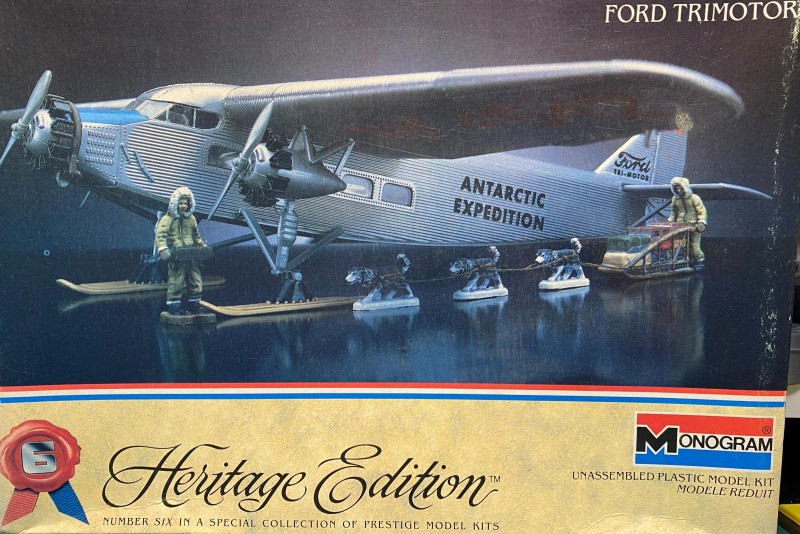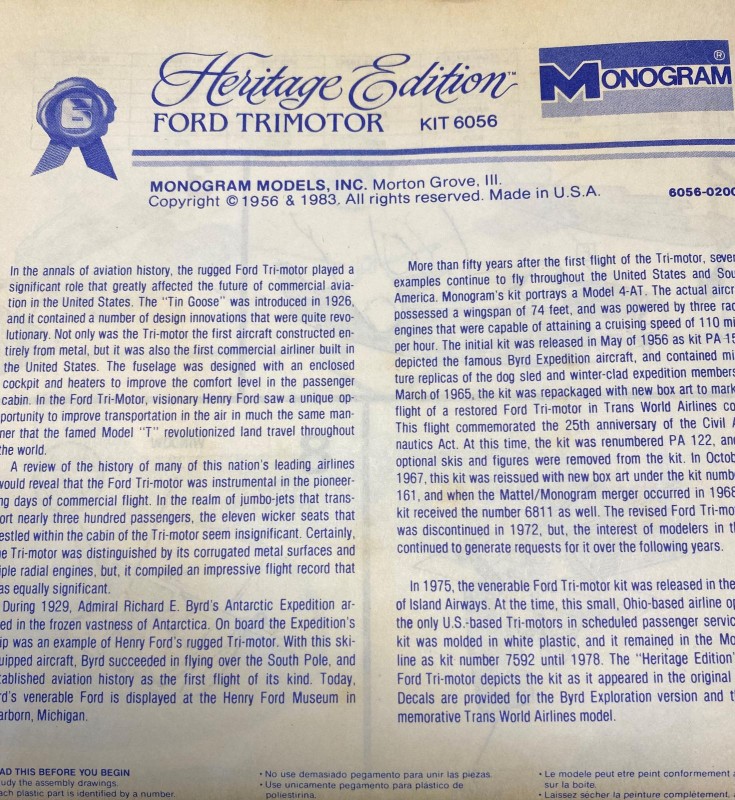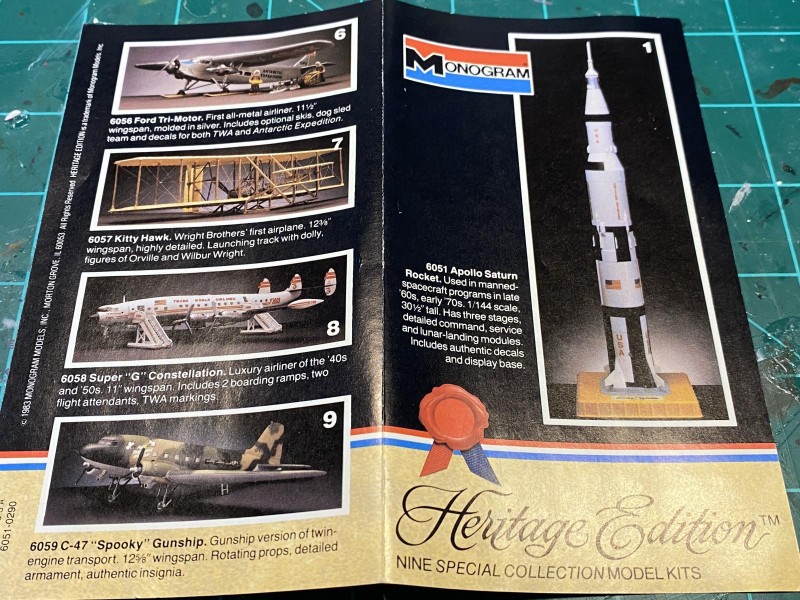I wanted something quick and fun to build for my next project. I was at my local hobby store this morning and got this Monogram Trimotor in Consignments for less than $20. I think a lot of us remember building this kit when we were kids, so this was a no-brainer.
-

Here is some background on the Trimotor: It was designed by the Stout Metal Aircraft Company. In the early 1920s, the company sent mimeographed letters to a group of potential investors asking they each contribute $1000 to the company. The company made one promise in the letter: "For your one thousand dollars you will get one definite promise: You will never get your money back." Henry Ford and his son Edsel each contributed $1000. In 1925, Ford bought out Stout and became the sole owner of the company. Stout had plans for a trimotor airliner called the 3-AT. A prototype was built and tested, and found to be underpowered. The plane was redesigned and new, higher power engines were added, becoming the first production model, the 4-AT. A 5-AT model eventually followed. The plane became a success as an airliner, as well as finding its way into the American military, the RCAF, and several other foreign air forces. It was also used for mapping, surveying, and fire fighting. In addition to carrying passengers for the airlines, they served as corporate airplanes for several oil and industrial companies. This rugged plane could be equipped with either wheels or skis. The Trimotor was built from 1926 to 1933.
This plane had a relatively short, but interesting, history. Pan American Airlines had a number of these planes, and opened many of their South American and Caribbean routes using the Trimotor. Both Charles Lindberg and Amelia Earhart flew the Ford. Commander Richard Byrd flew the trimotor and was the first person to fly directly over the South Geographic Pole. A Trimotor also has the distinction of being the first plane to carry a cow that was milked inflight. Franklin Roosevelt used a Trimotor for his 1932 political campaign, one of the first politicians to use a plane in a political campaign. A military Trimotor was used in 1942 to evacuate soldiers from Bataan in the Philippines. These flights continued until the plane was destroyed on the ground by Japanese aircraft. Although the Trimotor's career was relatively short, it made a big impact on the airline industry by making passenger flights common, inexpensive, and relatively safe.
This kit has almost as much history as the actual aircraft. It was first marketed in 1956. The Heritage Edition of this kit, which I have, was marketed in 1983. The history of the kit is actually included in the instructions, which is kind of cool.
-

1. Instructions have that aged look.
-

1. Remember these advertising inserts?
I wanted to use this kit as a canvas for some painted markings using stencils that I would make on my wife's die cut machine. The markings I could find were all sort of plain, and also very small in this scale. I considered US Navy or Marine markings, and then considered RCAF markings. In the end, I was inspired by the fact that this plane was used as a aerial delivery system for water being dropped on forest fires. I decided to put some hypothetical markings on a plane used for forestry or fire fighting.
This plane is very simple and comprises only a few parts. I started by spraying the interior of the plane black. I noticed that the cockpit area has a "shelf" that might be handy for scratchbuilding a cockpit. We'll see if that materializes. I glued the wings together. There was lots of flash to clean up, as you might expect with a kit this old. I plan to try and clean up the corrugations on the leading and trailing edges of the wing, which will probably take a while.
Well, that's about it for now. More tomorrow. Everyone stay safe. Cheers.
5 additional images. Click to enlarge.